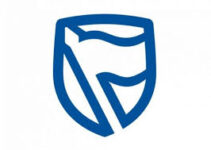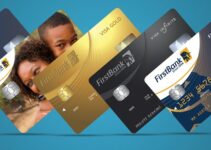The ATM card is a very important instrument of banking. ATM (Automated Teller Machine), otherwise known as ATM card, performs so many functions such as withdrawal, authorizing payments online, etc.
A debit card, unlike a credit card, is only used to make payments and withdrawals. The debit card can also be used in place of physical cash. That means it does not matter if you have cash or not, when you need to fulfill a transaction, your card is there for you to perform all the transactions you desire. The importance of the ATM card cannot be overemphasized, and thus, needs to be kept safe and secured. The ATM card carries some information on its body. Some of this information are the expiry dates, security numbers, and so on. The security numbers on the ATM are the most important component that makes up the card. The numbers are so crucial that they can be used to carry out online transactions and frauds by fraudsters, if not well guarded.

Let’s begin this article by highlighting the features of the ATM card.
Features of an ATM card
- Purchase Protection: Although, the purchase protection feature is a credit card benefit, that allows customers to file a claim with the issuer of the card for replacement, reimbursement, or repair of eligible stolen or damaged items. This benefit does not come with a debit card often; only in rare cases, which largely depends on the issuer, mostly a credit card issuer.
- No Cashback Programs: Cashback is a program where the issuer of the credit card pays a certain percentage of the money spent by the card owner.
- PIN: One feature of the ATM card is that it is associated with a PIN. As a debit card or ATM owner, you are expected to have a unique PIN which will be used to carry out all transactions with the card.
- Short Time Frame Report: In the event of a misplaced or stolen ATM card, you are supposed to report quickly to your bank to block your card before any transaction is carried out on it. Or, in a worst-case scenario, your account cleared.
- The FirstBank ATM card can be gotten online on the FirstBank website visit the branch to get it.
Types of Credit Cards
- Naira Mastercard
- Mastercard Platinum
- Verve Card
- Visa Card
- Virtual Card
How to Know Your ATM Card Number
Every ATM card has a 16-digit on the front side of it. This 16-digit is your ATM card number and they play a very vital role in securing your bank information.
Not many persons know the meaning of the digits on the front and the 3 digits on the back of their ATM cards. Therefore, we will discuss the meaning of the digits on your ATM to keep you informed.
Meaning of the Numbers on Your ATM Cards
The 16 digits on the front of your ATM card should be kept securely because fraudsters can use that to defraud you. The digits carry the details of your bank account. They can be used to prevent frauds that may occur when you carry out online banking, visit websites that require you to share your bank details, or during online shopping. When those digits are leaked, your account is as good as sharing it with a total stranger somewhere.
What Detail can your ATM Card Number Reveal?
On the front side of the card is the 16-digit number known as the Permanent Account Number (PAN). The first six numbers are the Bank Identity Number (BIN). The rest 10 digits are known as the Unique Account Numbers of the owner of the card. This account number is not the same as your account number, and they serve security purposes. The hologram on the card too is there for security purposes and indicates that the card is legal.
The hologram is the three-dimensional image of a dove that beams with light when light is shone upon it.
On the front side of the card is also the validity period of your card. This serves as a constant reminder to you that after the expiry date, they will not be able to use the card anymore. In that case, it has to be replaced with a new one.
The first digit on your ATM card stands as the Major Industry Identifier (MII). Different industries issue debit cards and the only way to know which industry issue a card is through the first digit.
The various industries and their numbers are:
- 1 and 2 are for Airline Industries
- 3 is for Travel
- 4 and 5 are is for the Banking and Financial industries. (To confirm, take a look at your ATM card right now).
- 6 is for Merchandising
- 7 is for Petroleum
- 8 is for Telecommunications
- And lastly, 9 is for national Assignment
The first 6 digits is called the Issuer Identity Number (IIN). It tells you which company issued a particular debit card.
From the 7th, up to the 15th number, leaving out the last number is known as the Bank Industry Number (BIN). Nothing to fear; this is not your account number as stated earlier, it is just a unique code that holds details of your bank account.
The last digit on your ATM card is also known as Check Digit. With this Check Digit, you can confidently deduct or infer that the card is legal. The Check Digit is said to be the validator of the rest of the numbers. When making payments online, when shopping online, the last digit on your card is there to ensure that your transaction is completed. Typing it incorrectly, for instance, when making payments, means that the other 15 numbers were not a mistake. There is certainly a relationship among those numbers.
Now, let’s turn to the back of the card:
On the back of the card, you will see three numbers there. This number is known as the CVV (Card Verification Value). The CVV is also called the security number because it holds the final power to authorize payments online or do other things. Every FirstBank customer’s CVV is unique, therefore you cannot use another customer’s CVV to carry out transactions.
Conclusion
Your ATM card number is unique and important, and as you have shown in this article, each one has its meaning and function. Keep your cards away from third parties to ensure the safety of your account, and to minimize fraud. Sometimes, you are required to put in the numbers on your card when making payments or shopping online, be vigilant, so you do not fall into the predatory claws of online fraudsters. Verify that such a website is genuine before you enter your details.





